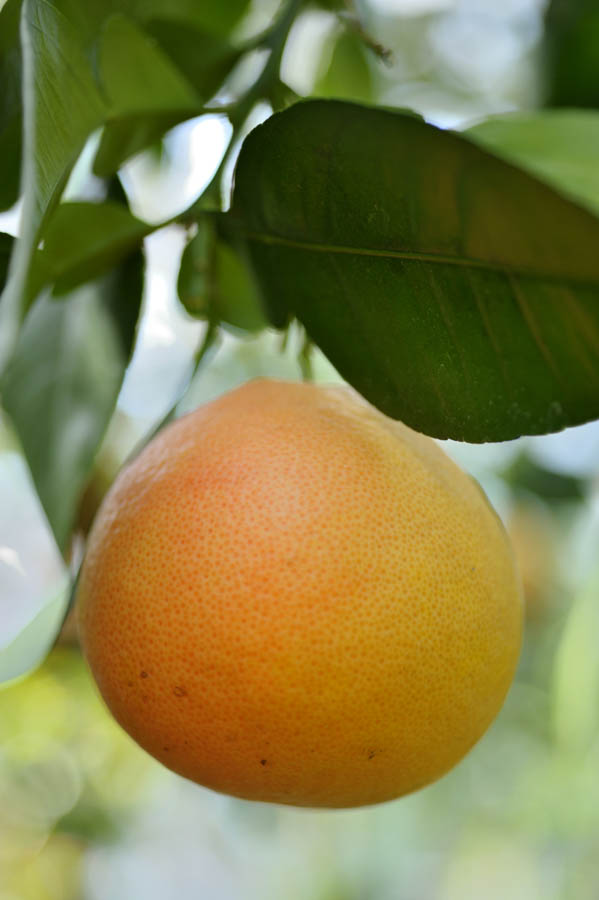Grapefruit Trees: Making Good Choices For the Home Garden

It is easy to love grapefruit: grapefruit trees make beautiful specimens for the home garden, with glossy, dark green leaves and colorful fruits that hang for an extended period of time. And grapefruits are a delicious and highly nutritious fruit. Larger than other citrus fruits, grapefruits may have yellow, pink, or reddish flesh. But there is a catch: most grapefruit trees are suited for growing in only a few areas of the United States including Florida, Texas, California, and Arizona. In California, commercial grapefruits are grown in the desert regions of the Imperial and Coachella valleys. Home gardeners pining for the day when they can walk out into their backyards to harvest a grapefruit for breakfast need to choose their cultivars and planting locations carefully.
Cultivars. Grapefruits are medium size trees in the Citrus genus and the family Rutaceae, the rue family, with many of its numerous plant members known for producing strongly aromatic, flavorful, or medicinal leaves and/or fruit. Grapefruit (Citrus paradisi) is actually a cross between a sweet orange (Citrus sinensis) and a pommelo (Citrus grandis.) Grapefruit cultivars that are commonly grown in the home garden and landscape include Duncan, March (the commercial standard), or Star Ruby.
The most distinct aspect of growing grapefruits is their physiological need for heat during the growing season, a requirement to produce the sweetness of a grapefruit. To be clear, the heat requirements of grapefruit exceed the heat requirements of many other citrus, such as lemons and limes. In addition, they are moderately sensitive to cold temperatures, incurring frost damage below 24°F. The short frost periods common in many of California’s inland valleys are generally not a problem for established citrus trees.
Most of California’s inland valleys and coastal regions do not have the type of summer high temperatures necessary to produce the highest quality grapefruit; gardeners in these areas will have more success by selecting one of the grapefruit x pummelo hybrids, Melogold and Oroblanco, which do not have the extremely high heat requirement. GardenZeus recommends Oroblanco for its sweet fruit and frost tolerance.
Location. Grapefruit trees need full sun to stay healthy and produce well, and prefer locations sheltered from wind. Grapefruit trees prefer southern to western exposures. Utilize heat reflecting surfaces such as walls and dark surfaces to increase warmth for your tree. When possible, plant grapefruit trees on the south side of larger trees or other landscape features that can act as windbreaks for winds from fall through spring.
Cold air tends to collect at the bottom of slopes. It’s generally best not to plant grapefruit trees in areas where cold air collects as grapefruit trees may suffer damage or abort flowers or fruit in response to frost or periods of unusually cold temperatures. Typically every few to several years in some inland valleys of California, a winter is cold enough to cause citrus to abort flowers, generally with the loss of some to all of the fruit crop.
Don’t know your GardenZeus climate zone? Click here.
Other articles of interest:
GardenZeus Quick Tips: Harvesting Lemons
Getting Started With Citrus: Purchasing and Placing Your Citrus Trees
Orange Trees: Should They Have Companion Plants?
